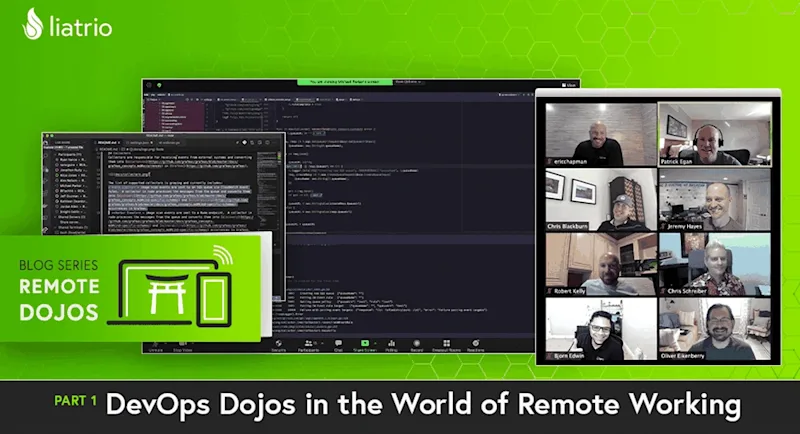The Role of Diversity and Inclusion in Hiring
Liatrio has always been committed to diversity, and we actively strive to create a culture of inclusion within our organization. Recently, we reassessed our recruiting process to ensure it’s consistent with our core values.
Hiring within the DevOps field is challenging, and increasing diversity within the field is even harder. We began by asking ourselves the following questions:
- What can we do to increase diversity within our candidate pool?
- How can we remove any biases towards or barriers to entry for potential candidates?
- How can we make the hiring process inviting and equitable for everyone involved?
As I’ll describe below, we decided to start by revising our job descriptions. Next, we evolved our interview processes and our technical exercise.
Creating an Inclusive Job Description
Project Include, a community for accelerating meaningful, enduring diversity and inclusion in the tech industry, offers valuable resources on their site. Their hiring recommendations include the use of inclusive job descriptions.
Two ways that we wanted to make our job descriptions more inclusive were to use gender-neutral language and create open-ended requirements. Using more inclusive language vs. exclusive (gender-specific) language is essential. With regard to open-ended requirements, we wanted to make sure that anyone could feel like they could apply. For example, women are more likely to apply for a position when they believe they’re fully qualified compared with men, who are more likely to apply for a position even if they’re unsure if they’re qualified.
After reviewing our job descriptions in-depth, we realized that using a single job description is the best way to increase diversity in our candidate pool, remove biases and barriers to entry, and make the process more open and welcoming.
At Liatrio, each employee wears many hats, and no one job description can accurately capture all of the work each of us does. We use the interview process as a means of determining the right roles for candidates who seem like a good fit. As a result, many candidates apply for one position and end up in a different position.
To create a single job description, we started by reviewing a variety of job descriptions used in the industry. We quickly determined that many positions seem to require an arbitrary number of years of experience with particular skills and tools. For example, one job post required 4+ years of experience using FastAPI, though the tool was created only 1.5 years ago. More to the point, tools change rapidly in this industry. A candidate with 4+ years of experience using a particular tool may or may not know more or work more strategically or creatively than a candidate with only 1-2 years of experience using that tool.
In our single job description, we decided that we need to do a better job of clarifying needs, expectations, and desired abilities and skill levels. Our first step was to make sure that our job description doesn’t attempt to equate years of experience with desired skill levels or abilities. Instead, our job description focuses on the candidate’s degree of familiarity with a tool or process, ability to implement the tool or process, and ability to learn and implement new tools. During their interviews, candidates then have the opportunity to build a business case for themselves by describing how they’ve experimented with and implemented various tools.
Evolving Our Interview Processes and Our Technical Exercise
Shifts in our hiring process did pose some challenges. Our new approach had a ripple effect on some of our other hiring processes, including our overall interview flow and the standard technical exercise that we ask all candidates to complete. We decided to evolve the interview process to determine what open roles would fit best and validate a mutual fit. (Mutuality is key. Candidates are also making decisions about whether or not they want to work with us. It’s our goal to ask thoughtful, engaging questions, make candidates feel welcome, better identify if candidates are a good fit for Liatrio, and help candidates understand why Liatrio may be the right company for them.)
The technical exercise is also getting a facelift. Liatrio assigns candidates a “take-home” exercise in order to get a better sense of how those candidates would work with Liatrio day to day. (You can read more about our original technical exercise process in this post from Chris Blackburn.) One key issue we recently addressed is the burden the exercise could place on candidates. We recognized that we need to consider if our technical exercise may inadvertently exclude some candidates who have caregiving or other responsibilities (time constraints) or difficulty affording cloud infrastructure (financial constraints).
We’re working to level the playing field to give all candidates a fair chance. Some ideas include offering to cover childcare expenses, provide a laptop to use, and cover public cloud access. A more pressing challenge involves identifying whether or not the candidate should go through the exercise at all. The exercise can take many hours, and we want to use everyone’s time wisely. To that end, we’re trying to tease out candidates’ technical understanding earlier in the interview process. We also may introduce stages and milestone check-ins to confirm that it’s in everyone’s best interests that we keep moving forward.
In addressing all of these important issues, we’ve made sure everyone at Liatrio had (and has) a voice. We opened up the conversation to all of our team members, many of whom are passionate about diversity and inclusion. With so many people weighing in, it has at times been hard to reach an agreement. With that said, this interactive, company-wide discussion has been wildly beneficial, and we plan to continue our team-wide brainstorming.
Of course, we're still working through some of these issues today. As the diversity and inclusion landscape continues to change, we’ll review our recruiting and hiring processes on a regular basis to ensure those processes are fair and fun -- and always uniquely Liatrio.
Next Steps
Ultimately, we want every member of our team to be the best at what they do and to feel valued every day. We believe that we’re all at our best when we take into account a wide variety of perspectives and experiences. We understand that this is a journey, and we’re striving to make continual incremental improvements. The changes we’re making to our recruitment process are a step in the right direction. Now that Liatrio’s new job description is live, please check it out!
*Photo by Christina @ wocintechchat.com on Unsplash

